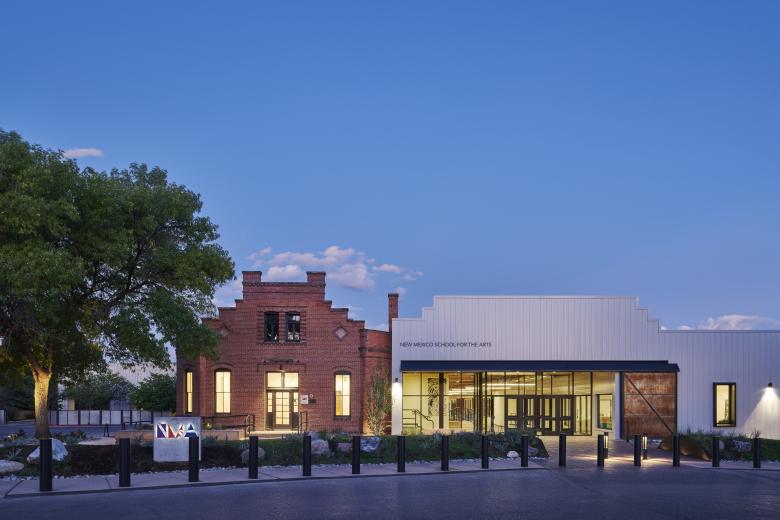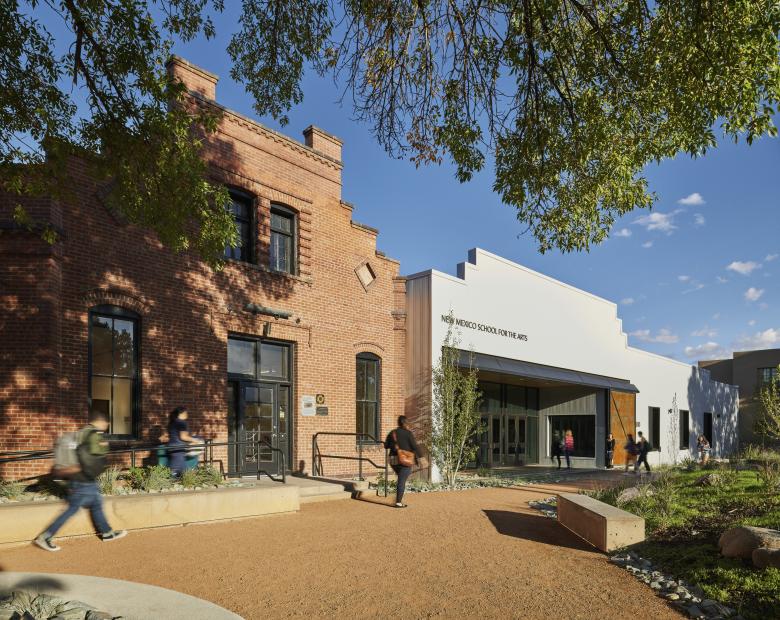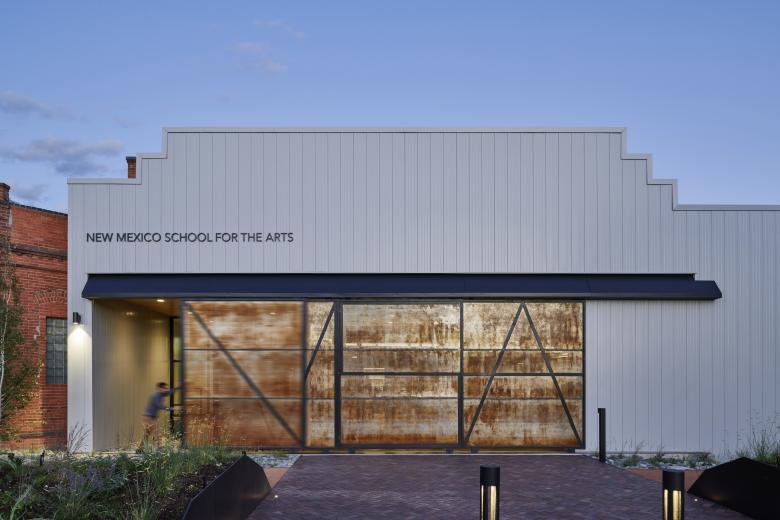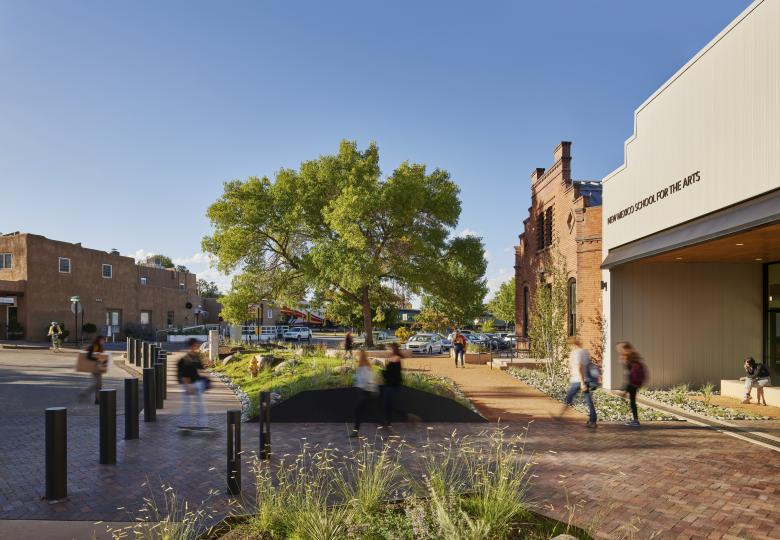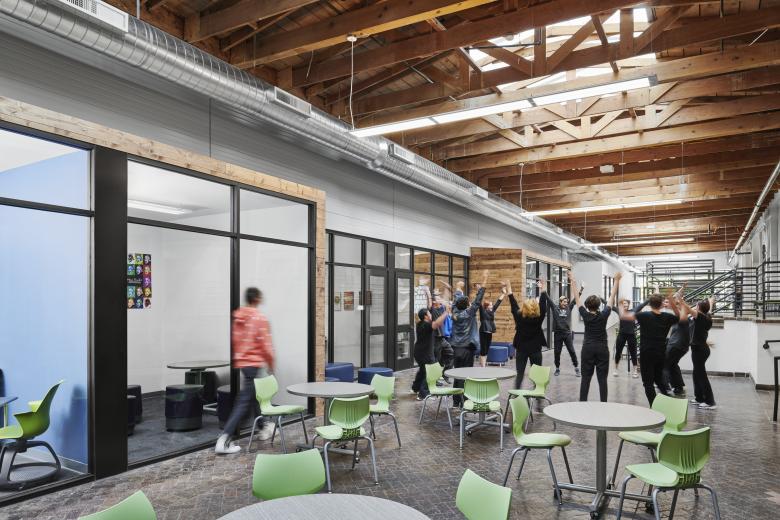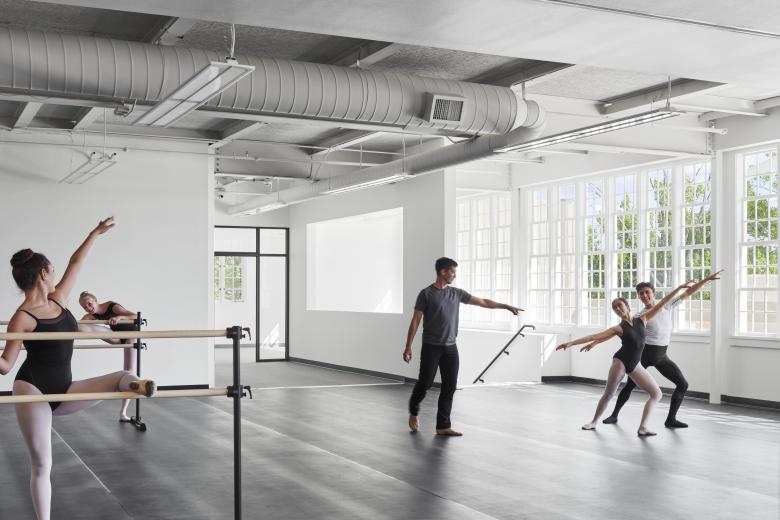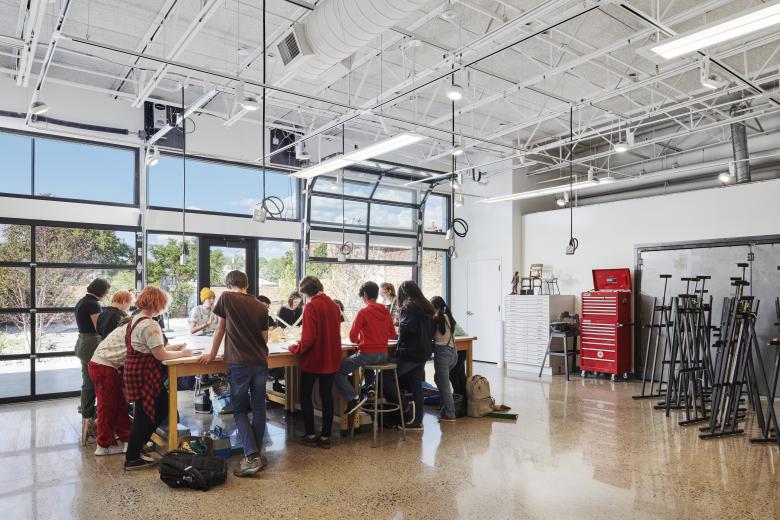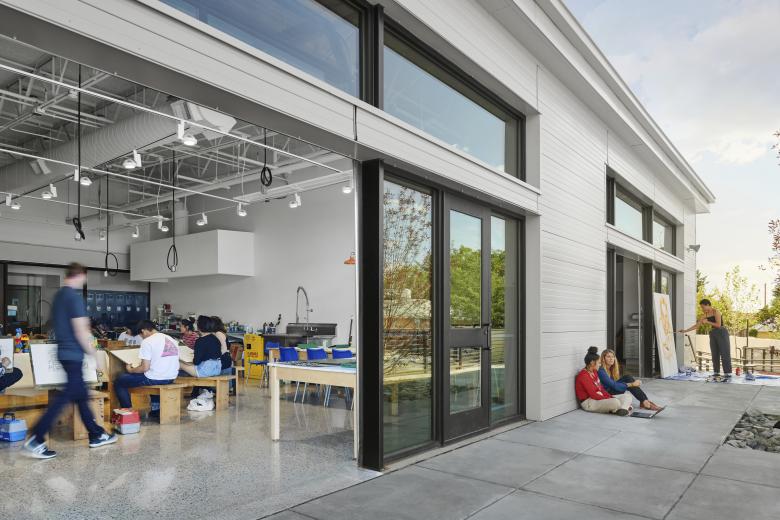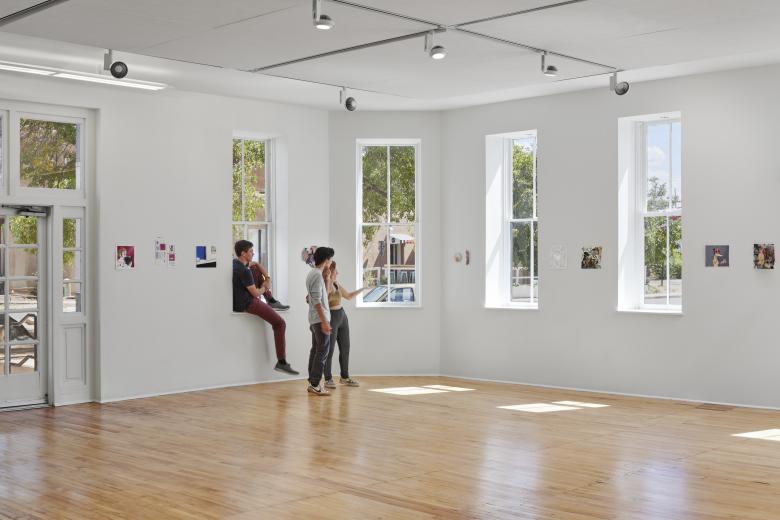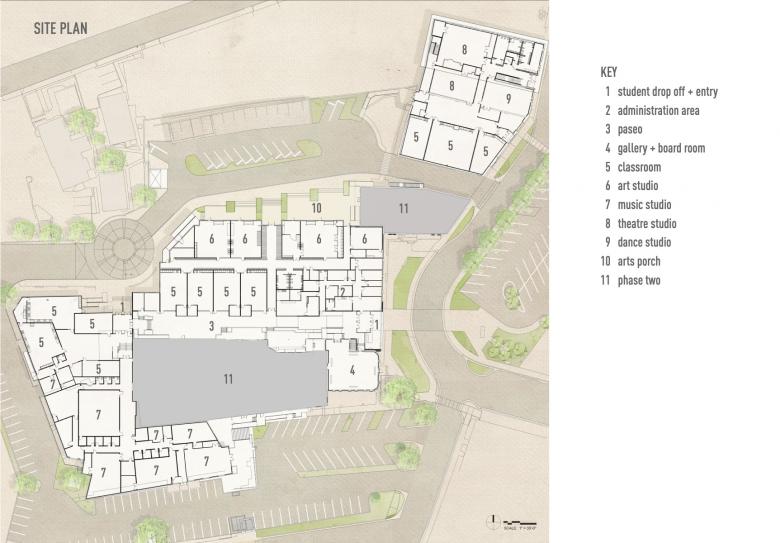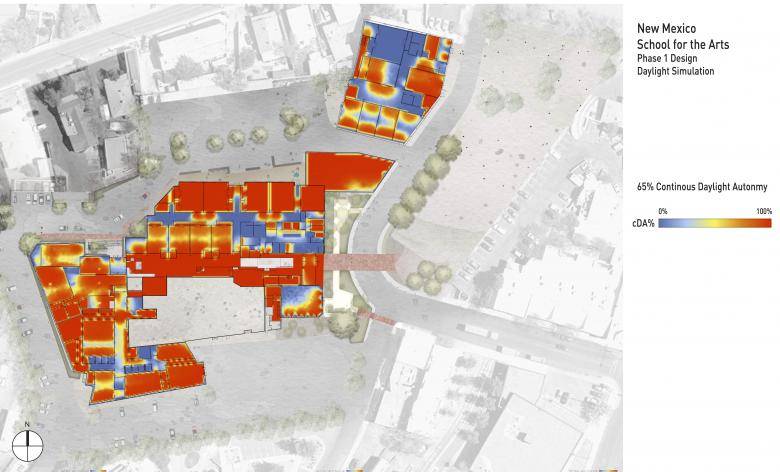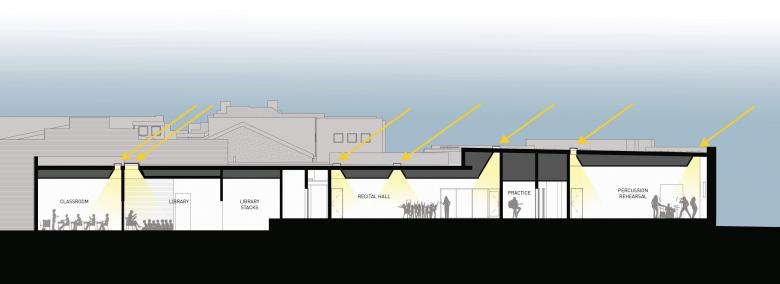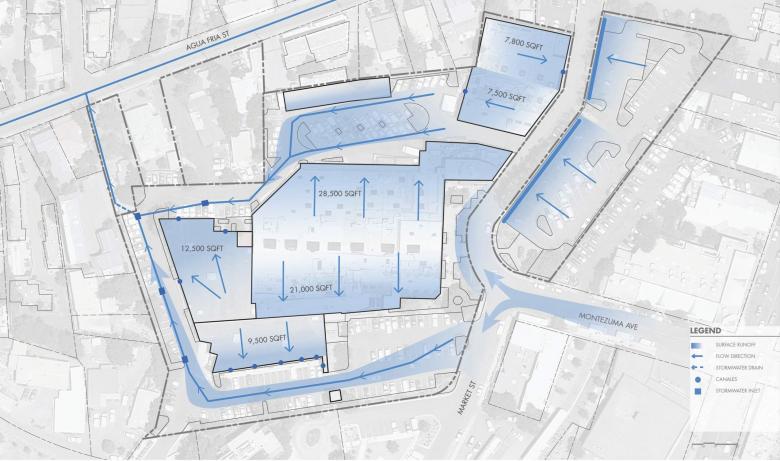US Building of the Week
New Mexico School for the Arts
Lake|Flato Architects + Studio SW Architects
1. juni 2021
Photo: Peter Molick
The New Mexico School for the Arts in Sante Fe occupies no less than ten buildings that served as a lumber mill, bookstore, and mini-mall, among other uses. A variety of facades, outdoor spaces, and exposed structural systems remind students of the site's history. Lake|Flato Architects answered a few questions about the project.
Location: Santa Fe, New Mexico, USA
Client: New Mexico School for the Arts (NMSA)
Architects: Lake|Flato Architects + Studio SW Architects
Lake|Flato Architects: Brandi Rickels (Design Principal), Seema Kairam (Project Architect), Greg Papay (Design Advisor)
Associate Architect: Studio SW Architects (Bob Heiser, Steve Osborn)
Structural Engineer: Luchini Trujillo
MEP/FP Engineer: BG Buildingworks
Landscape Architect: Surroundings
Contractor: Klinger Constructors
Site Area: 215,000 sf
Building Area: 75,000 sf
Photo: Peter Molick
What were the circumstances of receiving the commission for this project?Our team was one of about a dozen invited to participate in a Request for Qualifications (RFQ)/Interview process. The initial qualification was a New Mexico presence, so when Studio SW Architects was contacted, they reached out to Lake|Flato (LF) to join the team. They were the only NM firm to look outside the state for a partner with a deep array of learning-focused projects. The possibilities of the combination was enticing to NMSA, so they selected us after the interview round.
Photo: Peter Molick
Please provide an overview of the project.As the nation’s only public boarding school for talented arts students, the New Mexico School for the Arts provides transformational opportunities to New Mexico’s promising young artists. Located at the intersection of Santa Fe’s historic core and the bohemian Railyard District in the Sanbusco Center, the new home for the School embraces the character of this varied context and the buildings’ rich history. Repurposed buildings that were previously a lumber mill, storage depot, bookstore and mini-mall retail center form The New Mexico School for the Arts, where students work in Drama, Music, Dance, Visual Arts, and Creative Writing.
Photo: Peter Molick
What are the main ideas and inspirations influencing the design of the project?Combining the realities of the existing buildings with the needs of the school, the original lumber yard “drive through” became the school’s Paseo, the organizing street that feeds to classrooms and studios. The original lumber yard office, the salmon-colored brick structure, hosts visual art exhibitions. Arts studios occupy the north of the Paseo, spilling out to an art porch and harnessing the Northern light of New Mexico. Music studios occupy the tilt-wall shell of an old building, which reinforces the spaces’ acoustical needs. Dance and Drama cohabitate in the stucco clad ‘World Market’ building, a funky retail center embellished with natural light and acoustical isolation. Outdoor spaces extend and enhance the indoor experience – the front entry planters and berms provide protection in the urban setting while directing student and visitor traffic to the main entry. The integration of a dozen different structural, mechanical and façade systems serve as a pleasant reminder of the buildings’ history.
Paseo (Photo: Peter Molick)
How does the design respond to the unique qualities of the existing building?Located at the intersection of Santa Fe’s historic core and the bohemian Railyard District, NMSA’s new home embraces the character of its eclectic context and the buildings’ rich histories. The project’s most daunting challenges — to repurpose over a dozen different buildings built across 140 years into effective and inspirational arts and academic spaces — proved to be its most stimulating. NMSA worked with the design team to align the eccentricities of the existing conditions, the modest budget, the idiosyncrasies of the city and state’s historic preservation permitting agencies with the needs of the various arts functions to create purposeful, high performance learning environments.
Dance Studio (Photo: Peter Molick)
How did the project change between the initial design stage and its completion?The project started out making its best effort to use the existing buildings to as close as possible to "as is." However, once we got deeper into the investigation, it was determined that wood columns in about a quarter of the building sat on compacted dirt, not foundations. While staying within the envelope of the building, new steel framing allowed us to create more open art studio areas.
Art Studio (Photo: Peter Molick)
Was the project influenced by any trends in energy-conservation, construction, or design?The design focused significantly on student health and wellness. As a 75,000 sf mini-mall in multiple, tired structures, the existing building lacked many aspects that would promote occupant health and wellness. Where possible, apertures were added to the facade and skylights to the ceiling, creating direct connections and views to nature while introducing daylight throughout.
Water harvesting techniques from site and roofs help to combat erosion and flash flooding, while retaining berms in the front of the school help prevent flooding from Montezuma street. NMSA irrigates its native, low water use landscaping with a non-potable water source, reducing demand on the city’s potable system. Low flow and low water use fixtures cut internal demand to levels 30% below code requirements. Rain water on building roofs is channeled to exterior canals, allowing for future integration of rainwater catchment systems.
Email interview conducted by John Hill.
